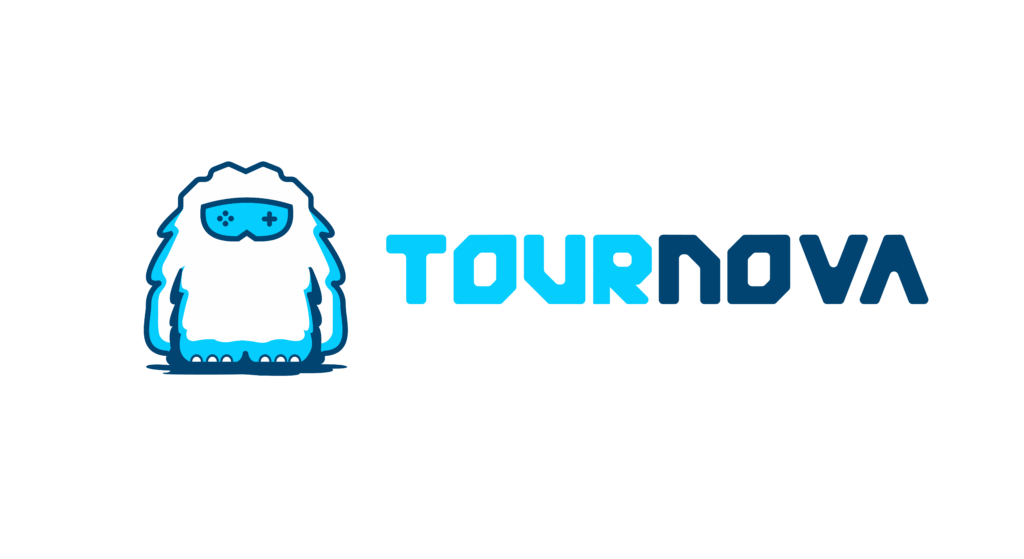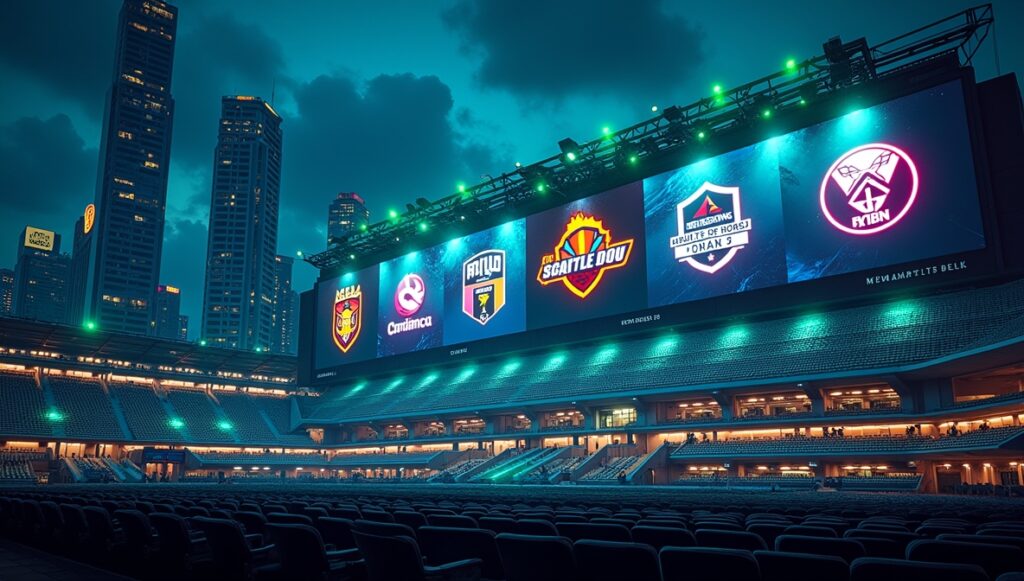Anyone who’s lost a match because of a sudden freeze in Rocket League or a wild teleport in Apex Legends knows this pain; lag spikes are the ultimate killjoy for online multiplayer games. At their worst, they hit when the action is at its peak, turning smooth strategy into button-mashing chaos. Unlike steady high ping, which is just slow all the time, lag spikes jump out like digital jump scares, showing up only when you least expect them. Trust us, we’ve been there; right in the final moments of Valorant, sweating our ultimate, only to watch it whiff due to lag spikes in games.

Lag Spikes in Games: The Simple Fixes That Truly Work
Let’s walk through every fix we know, from the living room tweaks to the geeky router settings, that have made our own multiplayer adventures a whole lot smoother. Whether you’re a weekend warrior or a seasoned ranked climber, these steps are here to help wipe out lag spikes for good. Grab your favorite snack, and let’s get to the heart of the problem together.
1. Introduction: Why Lag Spikes Are a Gamer’s Worst Enemy
For many of us, multiplayer games are that sweet spot between competition and connection, until a lag spike ruins everything. Imagine nearing the top 10 in Fortnite, and suddenly, your character stops, warping three steps back. That’s not just frustrating; it feels unfair because you never saw it coming.
lag spikes in games aren’t the same as a game that’s “always slow.” Instead, they strike like digital lightning: fast, random bursts where the action suddenly falls apart. We’re going step by step, breaking down the causes and guiding you through fixes that’ll get you back to a smooth, reliable experience.
2. What Causes Lag Spikes in Multiplayer Games?
We’ve spent more nights than we care to admit, troubleshooting the classic “why did my game just freeze!?” Below are some of the main suspects:
1. Unstable internet connection: Wi-Fi interference, low signal strength, or occasional ISP hiccups can ruin even a fast connection. One of us tried gaming from the basement; never again!
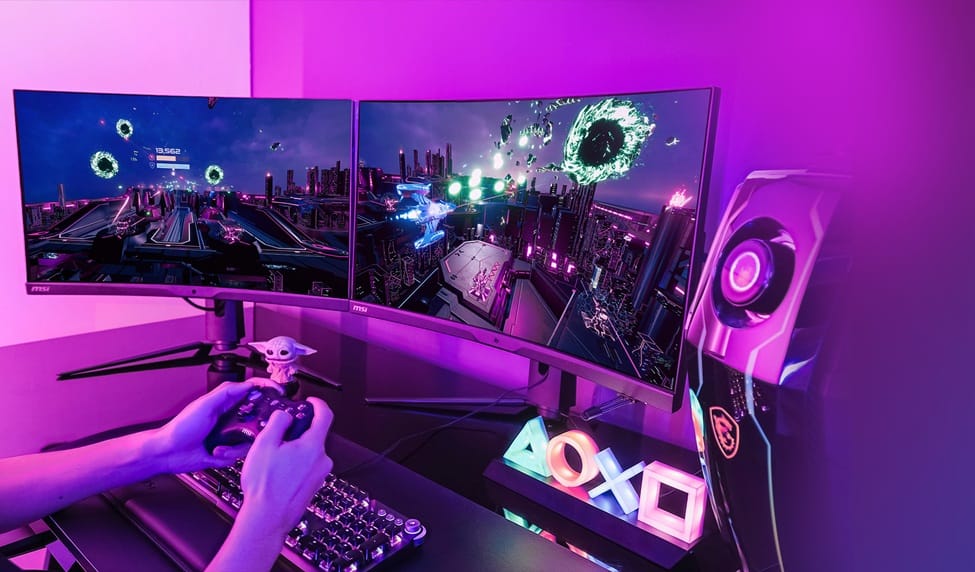
2. Background downloads or updates: Games like Call of Duty and Fortnite seem to update every week. If Steam or Windows decides to update mid-match, lag spikes will follow.
3. Hardware limitations: Lag from hardware issues is usually due to CPU/GPU limits affecting game performance, not directly causing network packet loss unless the system is under severe load.
4. Outdated drivers or firmware: Old network adapters or forgotten firmware updates can let lag sneak in.
5. Local congestion: When someone’s streaming 4K videos or uploading to YouTube, multiplayer lag follows.
6. Server-side problems: Sometimes, the problem isn’t even you; game servers go under heavy load, especially during big events or new season launches in games like Overwatch 2.
Knowing the usual suspects that could cause lag spikes in games helps us troubleshoot smarter, not harder.
3. Diagnose Your Lag: Identifying the Source
Putting on our “digital detective” hats, we always advise starting with tests. Run a speed test (like Speedtest.net) and a consistent ping test (type `ping google.com -t` in Windows Command Prompt or use PingPlotter for deeper insights). When spikes show up during these tests, keep a log; note the time, what’s running in the background, and whether others on your network are using the internet.
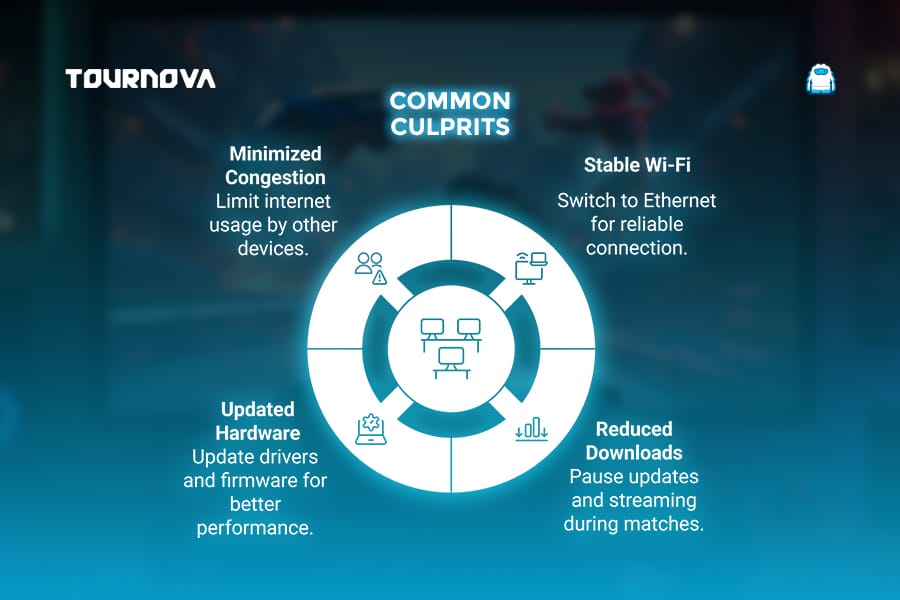
When the test shows good results but lag persists, it could be a game server problem. In competitive games like League of Legends, check official server status pages or ask teammates if they’re lagging too. Separating home issues from server issues gives you a clearer path to fixing the real problem.
4. Network Optimization: Your First Line of Defense
If you’re playing over Wi-Fi, you’re already giving lag spikes an invitation to your game night. We learned quickly that using a wired Ethernet connection kills 90% of random spikes; no more blaming invisible Wi-Fi goblins! If wires are impossible, keep your router in a central spot, up high, and away from clutter or microwaves (they’re the silent saboteurs).
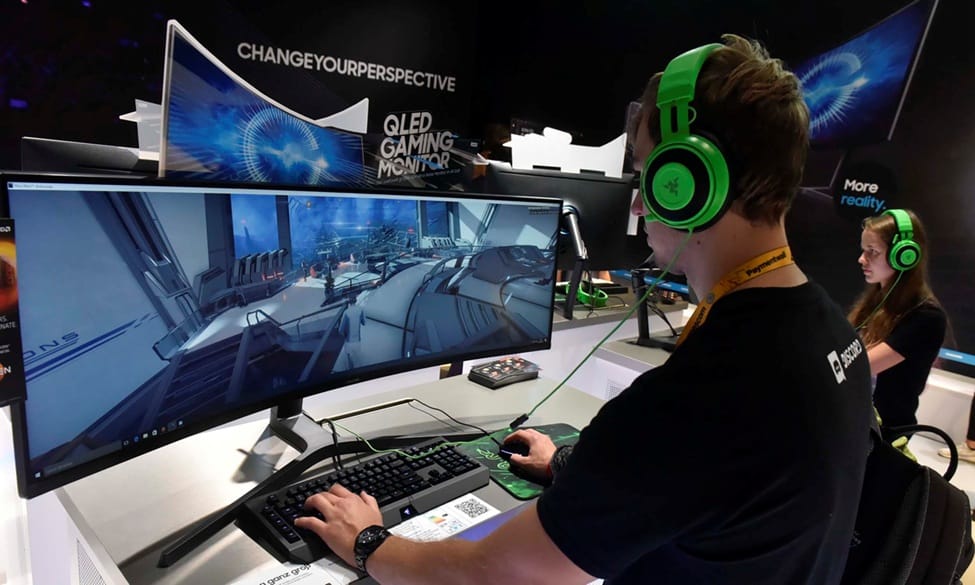
To make things even smoother, limit simultaneous streaming or video calls during game time. Some routers let you turn on Quality of Service (QoS), which means “Hey, give my GTA Online session priority over the family movie marathon.” It’s a gamer’s secret weapon against lag spikes in games.
5. Tuning Your Settings: Device and Router Tweaks
Updating network drivers, console firmware, and router software sounds boring, but these updates often include important fixes for latency and stability. We didn’t believe it until we tried it ourselves and saw instant improvements.
For the extra mile, assign a static IP to your gaming machine in your router settings, then set up port forwarding (or enable UPnP) to clear the road for game traffic. Some power users adjust MTU (Maximum Transmission Unit) for optimal packet size; a quick online search for your game plus “best MTU” usually turns up good advice. And always double-check in-game network settings; sometimes, a single “enable high performance” toggle is the solution. (UPnP should not be enabled simultaneously with manual port forwarding to avoid conflicts. )
6. Spotting and Fixing Software-Related Lag Spikes
It amazed us how many background apps quietly sabotage your multiplayer matches. Torrents, web browsers with too many tabs, or even innocent auto-backups, can trigger lag at the worst times.
Try gaming with as little running in the background as possible to avoid lag spikes in games. Temporarily disable antivirus or firewall to see if interference is happening (just remember to turn them back on for daily use!). Auto-updates in Windows, Steam, or Epic can often be paused or set to run outside your gaming hours; no more surprise data drains during ranked plays. Some systems offer a “gaming mode” that blocks background activity automatically.
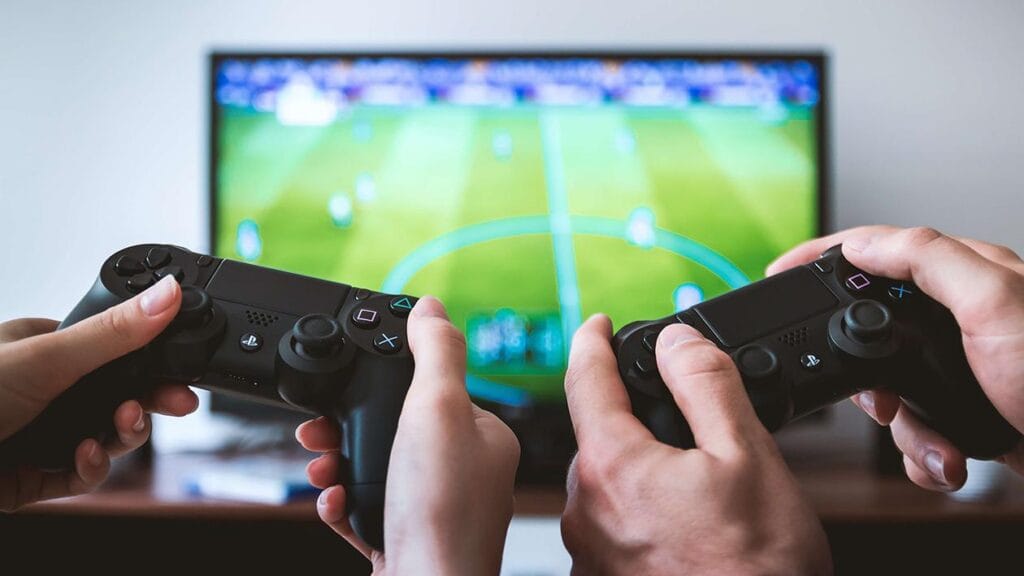
7. Dealing with ISP and Server Issues
At times, the culprits are far beyond our living rooms. Compare your speed test to your internet plan; if you’re getting much less, or latency is super spiky all day, there could be ISP congestion or even throttling on your line. During these times, a quick call to your provider (armed with test results) works wonders.
If friends in the same game are complaining, or there’s a big event happening, check the game’s server status on social or official pages. Sometimes it’s truly out of your hands, and the only fix is, unfortunately, patience.
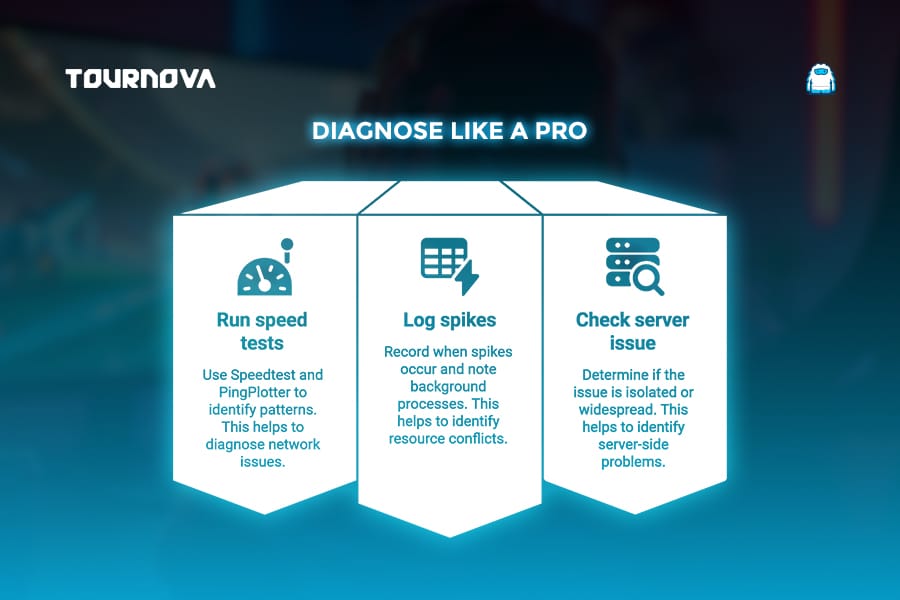
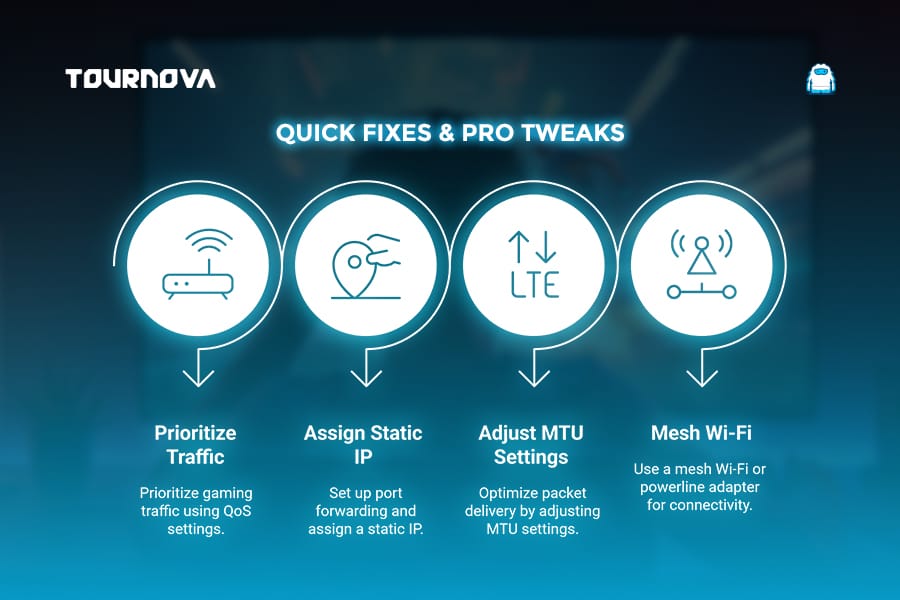
8. Advanced Solutions for Persistent Lag Spikes
When nothing else works, there’s still hope. Switching your DNS to Google (8.8.8.8) or Cloudflare (1.1.1.1) occasionally cuts down response times and could be effective against lag spikes in games. We’ve seen friends with tricky multi-floor houses use mesh Wi-Fi or powerline adapters to push strong signals everywhere. In rare cases, trying a gaming VPN can actually dodge ISP throttling, but it’s not a magic bullet for everyone.
Bad cables or aging routers can be silent lag producers. Upgrading to a modern router, buying shielded Ethernet cables, or even bumping up your internet package can be a game-changer if you’re serious about lag-free multiplayer.
Lag-Free Gaming Meets Effortless Tournament Management: How Tournova Keeps Your Competitive Edge Sharp
Just as lag spikes can disrupt the flow of gameplay and undermine even the most skilled players, complexity and clunky tools can spoil the excitement of an esports tournament before it even begins. Tournova is built to keep things smooth, not just in your ping, but in your whole tournament experience. By leveraging familiar platforms like Telegram and Discord, Tournova eliminates the usual barriers to entry, allowing players, organizers, and game developers to seamlessly participate, manage, and expand competitive events. Its automated bracket management, result reporting, and transparent prize distribution reduce the chance for confusion or delay, ensuring your momentum never drops, even as the stakes rise.
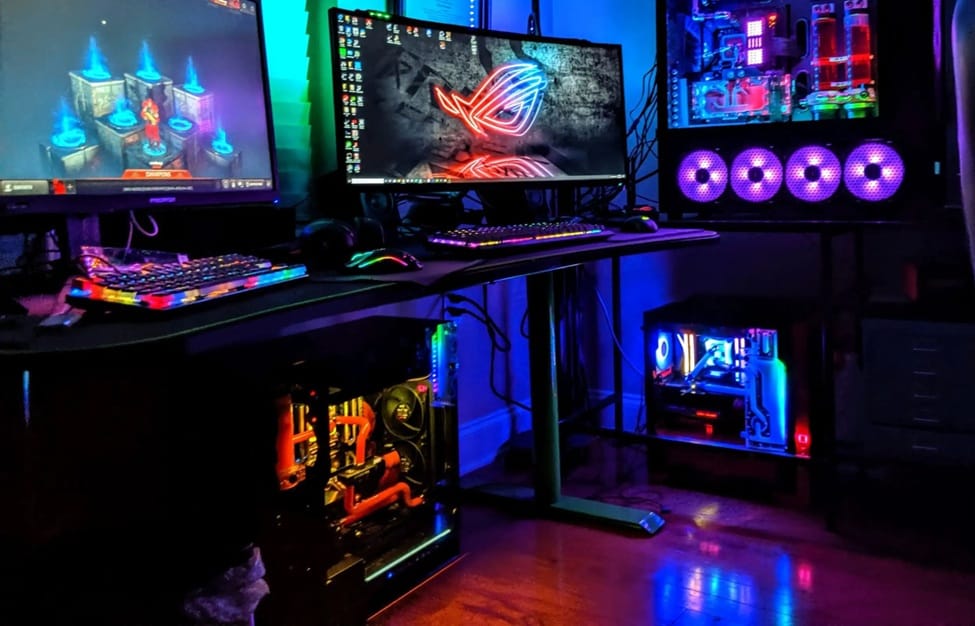
Tournova’s Seamless Platform: Your Defense Against Digital Disruptions
Much like upgrading your connection to avoid lag spikes in games, Tournova upgrades your tournament experience by focusing on reliability and user-friendliness. With a built-in token economy, you’re rewarded for ongoing participation, so every bracket win or community challenge is met with tangible value, fueling both engagement and enjoyment. Organizers benefit from easy-to-use settings and customization, making event creation and management frictionless, while real-time automation helps prevent the kinds of “soft freeze” moments that can derail player engagement. In short, Tournova’s platform is designed to keep your esports nights running just as smoothly as a perfectly optimized gaming rig, no matter where you play.
9. Closing Up: Play Smooth; Win More
Making lag spikes a distant memory isn’t magic; it’s a puzzle that can be solved, piece by piece. By working through your setup methodically, tweaking settings, and sometimes just having that awkward “can you pause Netflix?” conversation, you set yourself up for truly competitive, frustration-free play. If you run into weird problems, don’t hesitate to post in your favorite game’s forums or community groups. We’ve fixed countless headaches just by sharing stories and solutions for lag spikes in games. Here’s to more clutch wins, fewer digital ghost-moves, and the smoothest multiplayer matches you’ve ever played. See you (without lag) on the battlefield!
Read all you need to know about gaming tech and apps on Tournova.
10. FAQ: Common Lag Spike Questions Answered
1. Why do lag spikes seem to happen only in the evenings?
Internet traffic peaks at night when everyone’s online, so both local Wi-Fi and ISP networks can get overloaded, making lag spikes more frequent.
2. Does changing my game’s graphics settings help with lag spikes?
Sometimes! If your system can’t handle the visuals, it impacts network response as well. Lower graphics can free up resources for smoother play.
3. Can old Ethernet cables cause lag spikes?
Yes, damaged, unshielded, or outdated cables can introduce packet loss and instability. Upgrading cables can quickly solve stubborn lag issues.
4. Is it possible for other devices in my home to cause lag even if they’re not streaming or downloading?
Absolutely. Devices running cloud sync, idle auto-updates, or even smart home gear may use enough bandwidth to trigger sudden spikes.
